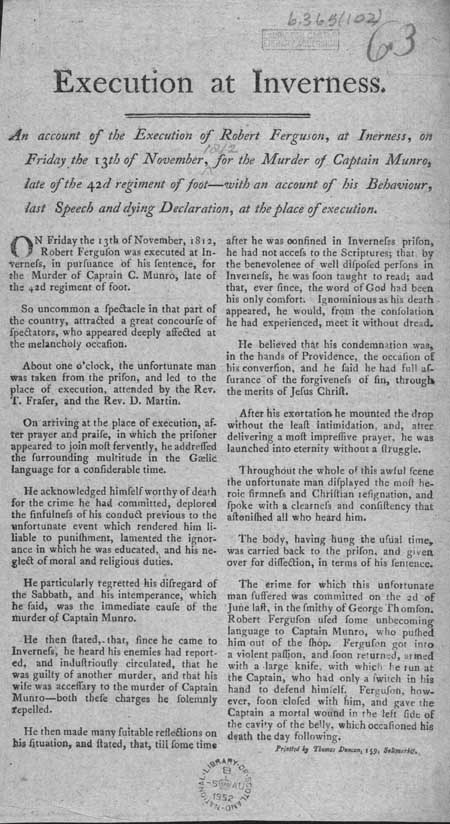Commentary
This report begins: 'An account of the Execution of Robert Ferguson, at Inerness, on Friday the 13th of November, for the Murder of Captain Munro, late of the 42d regiment of foot - with an account of his Behaviour, last Speech and dying Declaration, at the place of execution.' It was published by Thomas Duncan of the Saltmarket, Glasgow This Glasgow-published account of Ferguson's hanging in Inverness draws attention to some of the differences between Highland and Lowland Scotland that were more pronounced in the nineteenth century than today. The execution drew a huge crowd because it was 'so uncommon a spectacle', unlike in Edinburgh, where executions were quite common. It is also noted that the accused addressed the crowd in Gaelic: even as late as 1812 the vast majority of Highlanders spoke Gaelic as a first language. Reports recounting dark and salacious deeds were popular with the public, and, like today's sensationalist tabloids, sold in large numbers. Crimes could generate sequences of sheets covering descriptive accounts, court proceedings, last words, lamentations and executions as they occurred. As competition was fierce, immediacy was paramount, and these occasions provided an opportunity for printers and patterers to maximise sales.
View Transcription | Download PDF Facsimile
|
 |
Date of publication:
1812 shelfmark: 6.365(102)
 View larger image
View larger image
|


